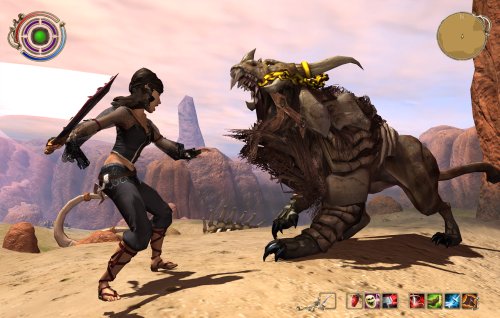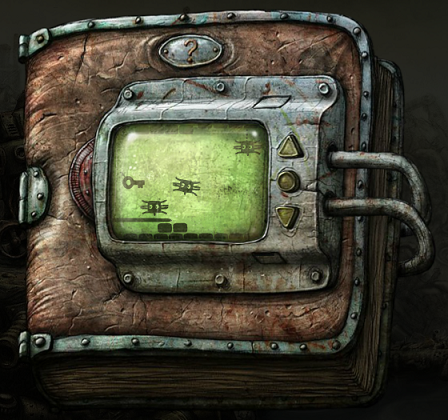Here are a few of the sound effects I chose for the Nexiuz Project:
My minihealth sound is from the VideoBlocks website. I chose it because it sounds like a quick battery charge up. The sound is actually an alien sword.
My megahealth sound is from the VideoBlocks website. I like this one because it also has a charging battery kind of feel but, this one has a higher pitch than the minihealth sound effect.
My power up sound was a little tough. I settled on a gusty wind sound because its as close as I could get to the original.
My power down sound is a space ufo shutting down. I love it.
AU375 Game Audio_NJordan
Thursday, September 11, 2014
Thursday, September 4, 2014
Music Selection for Nexiuz Project
The original soundtrack for the "brokenlight.ogg" in Nexiuz consisted of strong strings, guitar, an airy synth and a hip hop beat. It works well for the game because it creates a sense of urgency, high energy and is cohesive with the high-tech, space feel of the game.
I got my music from VideoBlocks. My choice has hard hitting bass, strings and a gradually rising techno-like beat. I think it works for the game because it sounds mysterious, has high tech "beep boop" sounds in the background and a gradually building beat.
I got my music from VideoBlocks. My choice has hard hitting bass, strings and a gradually rising techno-like beat. I think it works for the game because it sounds mysterious, has high tech "beep boop" sounds in the background and a gradually building beat.
Thursday, August 28, 2014
Kingdom Hearts Cutscene Analysis
This cutscene includes a large variety of voice overs. Sora, Donald, Goofy and Riku all have lines in this scene and their are about 2-3 voice dubs for riku to sell the idea of his possession by Ansem. Some of the sound effects include chains, foot steps and effects for swords and shields. The footsteps all sound really fake but, the cartoony vibe is apparent through the sound.
Tuesday, August 26, 2014
BIOWARE Game Development
Bioware is a game development corporation founded by Greg Zeschuk, Ray Muzyka, and Augustine Yip started the company in Canada in 1995. Their first commercial game, Shattered Steel, was released in 1996 and co-developed with Pyrotek Game Studios. Shattered Steel noticed by Interplay Productions, a game publisher, for its realistic graphics which paved the way for Bioware to sign a multi-game agreement with IP.
| Founders of Bioware |
Some if their most famous games include Baldur's Gate, MDK2, Neverwinter Nights, Star Wars : Knights of the Old Republic, Jade Empire, Mass Effect and Dragon Age. In 2008, Bioware was acquired by EA Games to act as its own division. This acquistition allows Bioware access to EA's audio team members but, they seem to mostly use their own team of sound designers. In Mass Effect 2, for example, Bioware used their own audio team of 8 to design the sound, dialog, music and effects but, used a combination of Bioware's and EA Games' sound designers for the Star Wars games.
Here is a list of Bioware's Previous Games:
Thursday, August 14, 2014
OGRE Game Engine
The OGRE game engine is a scene oriented, flexible, 3D engine designed to make it easier for developers to produce games and demos using 3D hardware. OGRE stands for Object-Oriented Graphics Rendering Engine. Steve Streeting created OGRE using the C/C++ language and made is accessible through various platforms: Windows, Linux and Mac OS X.
OGRE's features range from lighting, shadows, texturing, shaders, meshes, scene management, animation, physics and scripting. Developers can affect fonts, game environment, maps, the save/load system and so much more. Users of OGRE are draw to the engine's ability for graphic performance and its open source rendering library.
OGRE is free to download but after further research, it seems that developers that use OGRE all have different ways to utilize sound with the game engine because, it does not feature it on audio-ware. A user must use an add-on or a different program to include sound.
Thursday, July 31, 2014
Machinarium Analysis
Machinarium Analysis
Machinarium is a puzzle/adventure games where the player must solve a series of brain teasers such as, finding all the pieces of the main character, an extendable robot, and building him. The start screen of Machinarium has an eerie soundtrack. There are also some mechanical sounds filling out the ambience.
Metal clangs , water drops, steam engines, fireworks and various machine sounds make up most of the sound in this point-and click adventure.
One of the coolest parts of the game is the Hint Book Mini-Game. The player now becomes a Key that fires lasers at spiders. Only when the player beats the mini-game will they gain access to the hints inside. (Which are still a little vague.)
Created by Amanita Design Studios, Machinarium focuses on the adventure of a robot who has been exiled to the scrap heap.
Players must use "logic, collect important items and solve environmental puzzles to get the robot back to the city of Machinarium so he can rescue his robot girlfriend, save the head of the city and defeat the bad guys from the Black Cap Brotherhood."
Guitar Hero III Analysis
Guitar Hero III: Legends of Rock Analysis
Guitar Hero III utilizes motion capture to recreate each band member's movements onstage and to show how they interact when playing different songs. The recorded movements and facial expressions are then digitized and placed into the game.
The sound team for the Guitar Hero games spends hours in the studio recording various instruments and lots of different songs. Each instrument of each song in the game has to be recorded individually before being placed into the game. Sometimes the actual musician plays it but for the most part its the sound engineers of Guitar Hero.
The number of buttons assigned to musical phrases and riffs are what lend to the various levels of difficulty. The player can choose to be on of the Rock Legends or they can battle against them. GH3 is the first of the Guitar Hero installments to feature player vs Rock Star battles and online play.
Harmonix Team of Engineers
The music tracks, on-stage motions, stage lighting and effect synchronization were created by the Harmonix team of developers who were all musicians and had previous experience in note tracking. The note tracks were developed by placing notes in time with the song; for sections that had difficult parts to track within the game's engine, they opted to use sequences of notes that would seem to the match the music but still be playable. Hammer-ons and pull-offs ("HOPOs") for the previous games were automatically placed by the software. This allowed the engine to manually place HOPOs to make it easier to create certain effects in songs, such as sustained string bends. A separate team came up with the concepts for the various stages and arenas in the game.
http://en.wikipedia.org/wiki/Guitar_Hero_III:_Legends_of_Rock
Subscribe to:
Posts (Atom)









